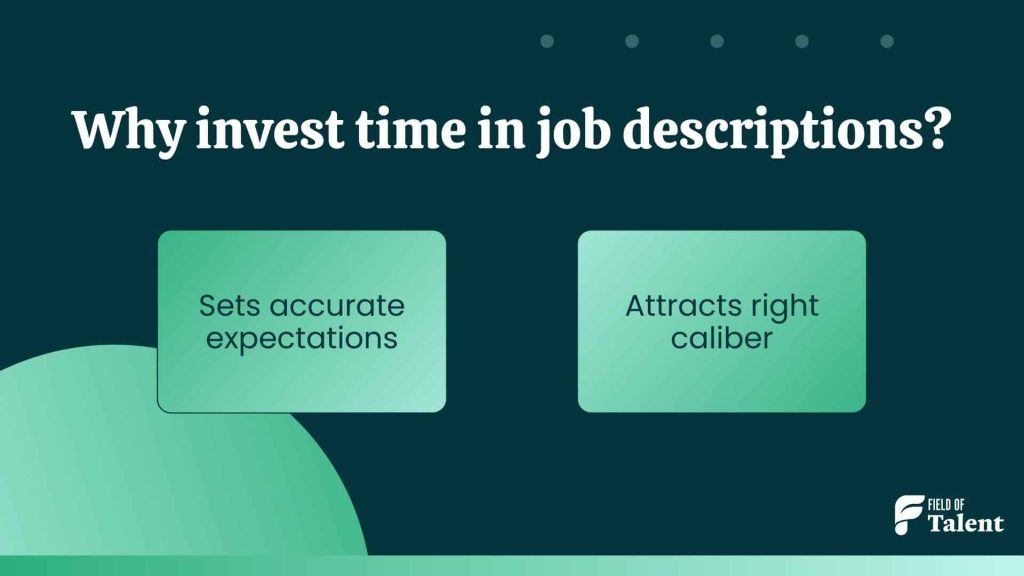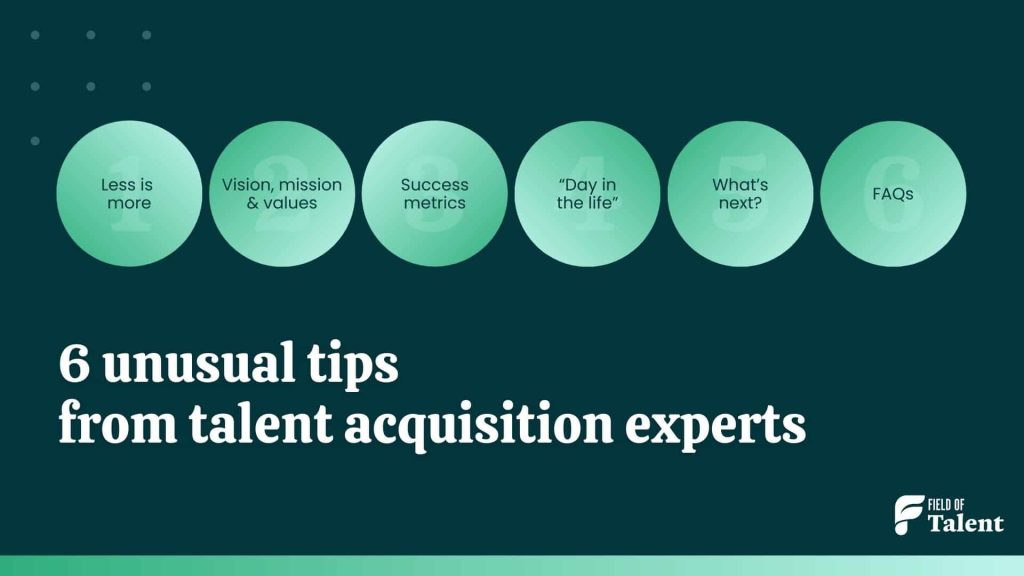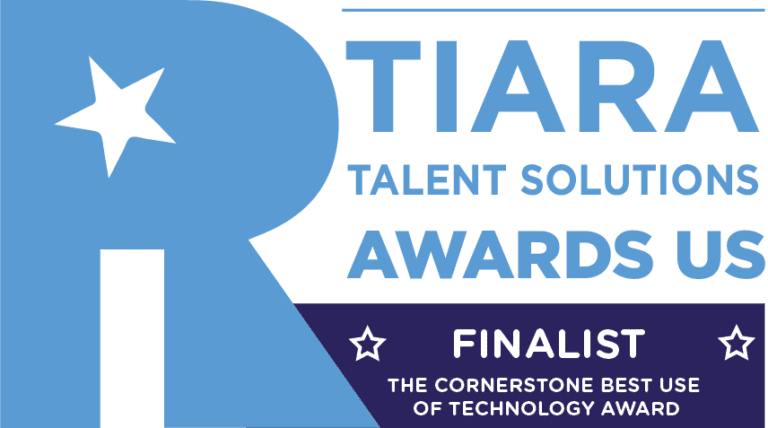Looking for the easy way out? Sorry.
A template or formula for the perfect job description would make our jobs a heck of a lot easier. Wouldn’t it? Just filling in the blank with a job title for each new opening.
Sadly, it doesn’t exist.
In fact, job descriptions are much more an artform. But to save you time, here’s some uncommon advice that will set your company and your job postings apart from the rest.

Why are job descriptions important?
Job descriptions can’t be templatized. Because for every new job you post, you have a different ideal hire.
Imagine writing a letter to the love of your life. You dream of your time together and what that life looks like in the future.
If later in life, you encounter a new person and want to write them a letter, you wouldn’t copy and paste that same letter. You’d personalize it for that individual.
Because, well, they’re different. And the life you’re imagining with them is completely different.
Job descriptions are love letters. They give your ideal job seeker an idea of what life looks like at your company and gives you the opportunity to find that perfect individual.
Use them wisely.
Sets expectations with job seekers
Job descriptions are an efficient way to set expectations with your candidates and gauge post-hire performance for the individual you end up hiring.
Not only should your posting set expectations for the hiring and onboarding process, but also your company culture and a day-in-the-life in the role.
Use this space to set the right tone with job seekers and accurately convey your company’s goals. Hiring a candidate without first setting expectations could turn sour quickly.
Expectation setting also increases retention because you’re on the same page as your new hire. Here are 5 additional ways to increase retention.

Attracts right caliber & type of candidates
Use your job description to paint a careful picture of what life at your organization looks like. That life shouldn’t be what everyone desires. But what your ideal hire – a specific type of person who aligns with your company culture, mission and values – wants.
As much as a job description is an advertisement to the right candidate, it’s also a warning to the wrong candidate that they may be better-suited somewhere else.
That’s okay! You want that special someone. And job seekers know that.
Additionally, your job descriptions should be written in the second-person point-of-view. By writing directly to the potential job applicant (like a love letter), you make a personal connection with them and increase the likelihood they feel one as well.
In other words, every syllable in your job description matters. That’s why they’re important to attract the top talent you seek.
Uncommon job description advice from talent acquisition experts
You’re a pro. You know the basics. That’s why you’re here.
Below are the tips you don’t normally get from recruitment experts. We go beyond the traditional advice to help your job descriptions stand out.
Because only then will your organization stand out.

1. Less is more
Keep your job descriptions simple. Less is more. The easier it is to read your posting, the faster candidates will realize if they’re a good fit for the role and company.
Great candidate experience 101.
Don’t get fancy with your job title or description. Attract candidates with plain language everyone understands. For example, use Analytics Specialist, not Analytics Assassin.
If your description gets long, include a summary or TL;DR (too long; don’t read) at the top. Apart from condensing the rest of the page, it’s a quick call-to-action for your potential candidates. For those who’ve landed on your page and want to apply immediately (e.g. you talked to them in-person and encouraged them to apply), make it easy on them.
2. Don’t skip your all-important vision, mission & values
What sets you apart from the guys down the block? What makes you different from your competitors?
This section will encourage those on the edge of filling out the job application to do just that.
Briefly talk about yourself. Your vision, mission and values are important to job seekers who want to make a meaningful impact in the world. Namely, Millennials and Gen Z.
By including a bit about your company, employees who don’t align with your culture will self-select themselves out of the process. And again, that’s okay!
Want a unique way of highlighting your culture in a job description? Feature a testimonial from a current employee. Who better to speak on your employee experience than an employee themselves?
3. Success metrics
KPIs and KPOs and OKRs – oh my!
Let your job applicants know how their performance will be evaluated. Not necessarily with concrete numbers. But with estimates and units.
Here are a few examples:
- Number of monthly calls
- Hours saved by automation
- Lines of code written per quarter
Success metrics let your candidates know you’re serious about the work. High achievers appreciate this.
4. A “day in the life”
Not only should you talk about key success metrics in your job posting, you should also highlight what a successful hire does on a daily basis.
When you close your eyes and think of “success,” you probably don’t imagine a specific number.
Neither does your ideal hire.
You imagine a life full of hobbies, activities, conversations, and so on.
All this to say – Don’t ignore the qualitative piece of success. You’re talking to humans across the computer screen. Sure, you may have quarterly quotas or annual performance metrics. But they don’t take into account your candidates’ professional development, potential or leadership capabilities, which your candidates want to know about.
What does a successful hire do day-in and day-out?
A “day in the life” also gives you the opportunity to feature your organizations’ benefits and perks, like weekly happy hours, mental health trainings, and gym memberships.
5. What’s next & hiring process milestones
Include a few details on what the hiring process looks like. Either in the automated follow-up email post-application or directly in the posting itself.
Setting expectations with your candidates will keep them aligned and interested in your job – and prevent them from ghosting you.
The last thing you want is for your top candidates to get scooped up by your competitors because they didn’t know when you were going to reach out. Let them know of your schedule. And it’s okay if things change – we’re human.
6. FAQs – The ultimate catch-all
After reading through your job description, your candidates likely have questions. Instead of offering your email or phone number and getting bombarded with questions, create a FAQs section that quickly fills any gaps.
Searching for content for your FAQs section? Ask a friend who doesn’t work at your company for a few questions they have after reading your job posting. Because they’re unbiased, they’ll give you honest questions about your role and company – similar to the questions your candidates would.
A note on SEO in job descriptions
Search engine optimization (SEO) is the science of getting your job descriptions to appear higher in search engine results pages.
You can manipulate your job description to rank higher on boards like Indeed or Linkedin. By including keywords that your ideal hire would search, you increase the odds your posting appears before your competitors’ listings.
Here are a few easy SEO edits to make to your job descriptions:
- Be sure your job title is something your ideal would search (e.g. Product Marketing Manager, not Marketing Guru)
- Add section headers throughout the description
- Add images and alt tags to describe your images
- Add links to your website or other external pages
Do not sacrifice your job posting’s content and meaning for a slight bump in SEO. Your goal is to hire the best candidate possible; not drive the most qualified leads to a subpar job description that doesn’t set the right expectations.
The perfect job description doesn’t exi–.
Congratulations. You’ve done it. You’ve written the perfect job description with expert advice from talent acquisition professionals on the recruitment frontlines.
May you attract the best and brightest candidates.
Top talent lasts on the market for only 10 days. Need to improve the speed of your hiring process? Field of Talent can help. Get your free consultation here.


